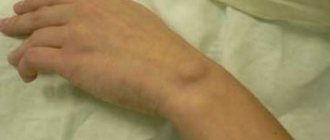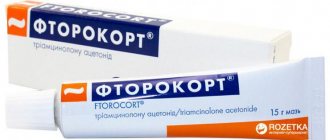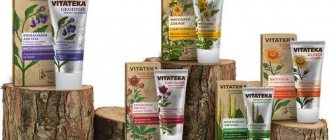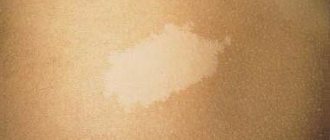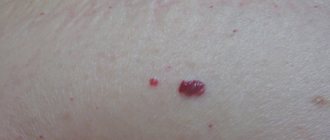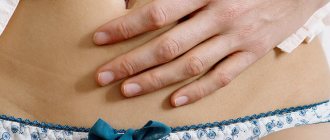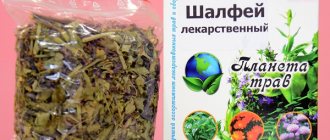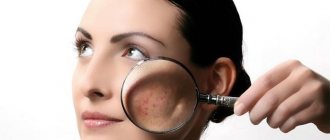Folk remedies for bruises can be used immediately after injury and on the second or third day after the formation of a hematoma. Compresses, lotions made from cabbage with honey, beets, salt and onions, herbal infusions, apple cider vinegar, potato starch and other common products are considered effective. You can prepare an ointment from butter: it not only resolves hematomas, but also has a pronounced wound-healing effect.
If folk remedies do not give the desired effect, you can use external medications at home: Lyoton, Troxevasin, Heparin ointment.
Why does a bruise appear?
In medicine, any bruise is considered a hematoma. It occurs against the background of rupture of blood capillaries and is formed for one of the reasons:
- The presence of diseases of internal organs, problems with the circulatory system (leukemia, hepatic cirrhosis, von Willebrand disease, varicose veins, vasculitis).
- Mechanical impact on the body (bruise, blow, compression, injections).
Bruises under the eyes, which are popularly called bags, occur due to overwork of the body. It can be caused by insomnia, stress, severe physical and mental stress, and excessive drinking.
What consequences of self-medication may occur?
Folk remedies mainly fight the visible causes of the problem. They help if the case is one-time and not caused by serious illnesses. Therefore, if bruises often appear on the body for no reason, then this is a reason to consult a doctor. Symptoms may be the beginning of a serious illness that cannot be overcome by folk remedies. Identifying any disease at an early stage simplifies the treatment process.
The mechanism of bruise formation
The causes of hematomas are related to the anatomy of the skin. It consists of three layers:
- Epidermis. This is a thin area that does not have blood vessels and performs a protective function. With a closed injury, it is not damaged.
- Dermis. Consists of connective tissue fibers. The capillaries located in the dermis play a special role in the appearance of bruises. Pain at the site of the injury is felt due to the presence of nerve endings in this layer.
- Hypodermis. Subcutaneous fat is located deeper than the other layers. It contains small vessels. This is where bruises form, since adipose tissue is much softer than connective tissue.
The severity of damage cannot be assessed by the area of the hematoma. A huge bruise may not affect the lower layers of the skin and may not damage the muscles.
Other features of the body play a special role in the formation of hematomas:
- blood composition;
- permeability of vascular walls;
- thickness of adipose tissue;
- structure of blood vessels.
The older a person is, the more often he or she develops hematomas. A child may have no trace left after a blow, while an old person will have a huge bruise due to a similar injury. This is due to the weakening of blood vessels, loss of elasticity of the walls and impaired circulation in them.
What to do to avoid bruising
To prevent a bruise after a bruise or injury, the victim needs to provide first aid:
- apply a cold compress to the problem area for 30 minutes - it will narrow the blood vessels and prevent them from rupturing;
- apply a thin layer of laundry soap to the pathological lesion and rinse off after 40 minutes - this method is not suitable if there is damage to the integrity of the skin;
- wipe the bruised area with an ice cube made from a solution with essential oils.
Treatment of bruises usually lasts 5-10 days. You can speed up the process of resorption of hematomas with the help of folk remedies - lotions, compresses, homemade ointment based on butter not only promote rapid resorption of the hematoma, but also relieve pain and eliminate swelling.
Color change
The size and color of the bruise depend on several factors:
- location relative to the vessels (pulsating hematoma occurs as a result of disruption of a large artery, non-pulsating hematoma occurs due to damage to small capillaries);
- the amount of accumulated blood;
- duration of injury;
- force of mechanical action (the higher it is, the deeper the hemorrhage occurred in the tissue).
The appearance and resorption of a hematoma occurs in several stages, which are accompanied by a change in the shade of the bruise:
- Red-purple. The red color is a consequence of damage in the first hours after the injury. This shade is due to the penetration of red blood cells into the skin tissue, which contain oxyhemoglobin of the corresponding color. During these hours, a person feels the greatest pain, and edema forms in the form of swelling.
- Blue or purple. The next day, the bruise acquires this color because the process of oxidation of oxyhemoglobin in the tissues occurs. Resorption has not yet begun, but the swelling is gradually subsiding.
- Green. The hematoma acquires this shade 5-6 days after injury. This occurs due to the biochemical transformation of hemoglobin, which enters the tissue from red blood cells. Biliverdin is formed, which has a greenish tint. Pain and swelling will disappear by this time.
- Yellow. In the final stage, the bruise turns yellow because biliverdin is converted to bilirubin. Over time, the hematoma will disappear under the influence of macrophages, which absorb dead cells. The yellow spot dissolves and leaves no trace.
Similar phases are observed when a significant volume of blood is released. If ice was applied immediately after the blow, the bruise will not look as noticeable.
Top 10 ways to quickly get rid of a bruise
Slipped, fell - bruise! This situation is familiar to everyone. In the crazy pace of life, this is a common phenomenon that you often don’t even pay attention to... Until a blue-green spot with swelling appears in a visible place: the face, knee or arm. In addition to aesthetic inconveniences, a hematoma causes painful sensations that you want to get rid of as quickly as possible. Of course, it will go away on its own in a few days. But what if you don’t have time to wait for the “problem” to resolve? Read our review to learn how to get rid of a bruise faster or prevent its appearance altogether!
Home treatments
If the bruise is caused by a blow, you should apply something cold to the sore spot and hold it there throughout the day. This will help reduce the size of the hematoma and speed up its healing. After 2 days, warm compresses are applied. If, apart from the external manifestation of bruising and swelling, there are no other alarming signs, you can do without going to the doctor.
Today, the pharmaceutical market offers a huge number of products to get rid of bruises. These include:
- Lyoton;
- Troxevasin;
- Bruise-off;
- Heparin ointment;
- Badyaga;
- Voltaren;
- Finalgon;
- Hepatrombin.
These ointments have wound healing, regenerating and analgesic effects. It is advisable to use them 7-8 hours after the impact. If you apply them immediately, they will increase swelling and provoke the appearance of a more pronounced hematoma.
As non-traditional methods of treatment, lotions with aloe, compresses with tincture of calendula and golden mustache, cabbage or potatoes, and garlic infusion are suitable. Before using traditional recipes and medications, you should make sure there are no contraindications.
Effective folk remedies for bruises
In almost every case, a bruise forms after receiving a mechanical injury or bruise - this damage to soft tissue provides a person with severe pain and discomfort for several days. Therefore, among folk remedies it is worth using those that have a complex effect - they promote the resorption of hematomas and eliminate the consequences of a bruise such as swelling and pain.
Watch the video about a homemade recipe for bumps and bruises:
Laundry soap
Laundry soap quickly and effectively relieves swelling of soft tissues, which means the pressure on the nerve endings will be reduced - pain and discomfort will disappear.
You need to take a piece of linen or any other fabric napkin (not silk, satin or velvet), soak it in warm water, wring it out and rub the surface with laundry soap - it will foam a little, it is important to completely cover the fabric with soap. Then the napkin is applied to the damaged area and secured with a bandage. The holding time of such a compress is 20-30 minutes until the soap dries. Afterwards you need to immediately replace the fabric with “fresh” one.
You can do up to 6 such procedures per day, the pain will begin to decrease after 2-3 compresses, the swelling will disappear by the end of the day, the bruise will either not form or will resolve on the second day.
Lotions
Lotions based on medicinal herbs will also be effective against bruises and bruises:
- Ledum + coltsfoot. Take 1 tablespoon of each component, add 200 ml of water and boil for 5 minutes. After cooling, the broth is filtered and used for lotions, which are applied to the hematoma and bruise for 20 minutes every 2-3 hours.
- Common wormwood. Fresh leaves of the plant are kneaded in a mortar until the juice appears. Soak gauze or a cotton pad in it and apply it to the pathological lesion. The soaking time of the lotion is 15 minutes, the procedure should be repeated every 2 hours.
- Viburnum + aloe + celandine. Mix 2 teaspoons of viburnum bark, 1 tablespoon of aloe pulp and 1 teaspoon of dried celandine and add 250 ml of hot water. Wrap the dishes, leave for 30 minutes, after which the finished infusion is filtered and used warm for lotions.
Compresses at home
If a bruise appears on the face (black eye), then a compress made from flaxseed at home will help you quickly get rid of it. You need to put ground flaxseeds in a fabric bag or gauze folded in several layers, then put it in boiling water for literally 30 seconds. After removing from boiling water and cooling slightly, the bag is applied to the bruise until the contents have completely cooled. You can do 3 procedures per day.
For bruises on the body you can use:
- Cold compresses are effective immediately after a bruise; they make the bruise minimal in size and not pronounced, relieve pain and relieve swelling. A towel or gauze or bandage is moistened in cold water and applied to the problem area. Change the compress immediately after it warms up.
- Warm salt compresses dissolve even “old” hematomas. In 1 liter of warm water you need to dissolve 2 tablespoons of regular table salt. A towel or cloth is soaked in the solution and applied to the bruised area. Cover everything on top with polyethylene and a warm scarf or blanket. The compress exposure time is 40 minutes.
Essential oil
Essential oils can be used immediately after a bruise, and when a hematoma has already formed. In the first case, ice cubes made from water with lavender or tea tree oil (2 drops per 100 ml) will help - it relieves pain, eliminates swelling, and prevents the formation of extensive bruising. For warm compresses you should use the following oils:
- clary sage;
- mint;
- from immortelle;
- rosemary;
- from geranium;
- from blue chamomile;
- cypress.
In 200 ml of warm water you need to add 5 drops of any of the listed essential oils, soak a gauze cloth in the solution and apply it to the bruised area. From above, everything is insulated with polyethylene and a scarf or handkerchief, left for 40-60 minutes.
Other recipes
Among the folk recipes against bruises the following will also be effective:
- Badyaga - powder is used, which is sold in pharmacies. You need to mix 2 tablespoons of the product with 1 tablespoon of warm water, stir everything thoroughly to obtain a homogeneous mass. The finished product is applied to the bruise, left there until completely dry and then washed off with cool water. You can use bodyagu 3 times a day; it works great against bruises on the face.
- Bananas - the pulp can be eaten, but the peel is useful for treating bruises and contusions. You need to apply it with the inside to the problem area and secure it with a bandage. The holding time is 40 minutes, after which you can change to a fresh one.
- Calendula tincture - sold in pharmacies, prepared with alcohol, used “in its pure form”. A gauze pad or cotton pad is moistened in the product and applied to the bruised area for 20-30 minutes. The procedure is repeated every 2 hours.
- White beans - used for a warm compress. The product is boiled until tender, then kneaded with a masher with a small amount of broth, and the resulting mass is spread on a bandage or gauze napkin. Everything is applied to the pathological focus, covered with polyethylene and something warm on top. The compress remains overnight.
Any folk remedies should be used after eliminating the possibility of developing an allergic skin reaction.
When to see a doctor
There are a number of cases in which timely medical assistance is necessary:
- A huge and painful bruise on the arms or legs. There is a risk of broken bones or cracks in them.
- Increased temperature, severe throbbing pain, increased swelling. These symptoms may indicate an infection.
- The appearance of a hematoma for no reason. In this case there were no blows or bruises.
- Pulsating hematoma. He speaks of a rupture of a large artery and requires stopping the blood.
Sometimes surgery is required to remove a large bruise. The contents of the hematoma are removed using a puncture needle and syringe.
You should also consult a specialist when all known methods have failed and the bruise does not change color. Individual therapy is necessary in the case of blood clotting disorders, pathologies of the vascular walls, and diseases of the hematopoietic system. Therefore, you should not start self-treatment without consulting a doctor.
Provoking factors
Bruises appear due to physical injuries (blows, bruises) and internal disorders.
Diseases that reduce blood clotting
- Hemophilia is a rare hereditary disease in which the blood clotting process slows down.
- Thrombocytopathy and thrombocytopenia are pathologies of the hematopoietic system, due to which the number of platelets decreases and the process of their work is disrupted. This results in the body being unable to repair damaged blood vessels. Without timely medical care, the consequence of these diseases is death from bleeding.
Vascular diseases, decreased strength of their walls
- Varicose veins - veins increase to such a size that they begin to protrude from under the skin. This change is possible due to the strong thinning of their walls. The deformation entails a violation of the outflow of venous blood and, as it accumulates, it puts pressure on the vessels from the inside. This often leads to extensive bleeding on the legs.
- Hemorrhagic vasculitis - leads to inflammation of the walls of the bloodstream. This is manifested by numerous small hemorrhages, merging into a large bruise.
Impaired collagen production
This condition is affected by:
- Age – metabolic processes throughout the body slow down, which leads to a decrease in the strength of the skin and the vessels that nourish it.
- Lack of vitamins – the patient’s diet lacks vitamins C, K, P. They are the main component of this protein.
Pathologies of the pancreas, kidneys, liver
- Diabetes mellitus - metabolic processes in cells are disrupted, small wounds and bruises heal within a few months. This disease can lead to perforation of the capillaries, that is, the appearance of small holes in them. The disease disrupts metabolic processes in cells and causes minor wounds and bruises to heal within several months. It can also lead to perforation of the capillaries, that is, the appearance of small holes in them.
- Liver and kidney dysfunction – bilirubin, creatinine and urea appear in the blood. These substances irritate the nerve endings and cause severe itching. Most often, the legs itch, since blood stagnates in this part of the body and these substances have a negative effect on neurons.
Taking medications
Long-term use of blood thinning drugs (Aspirin, Heparin), glucocorticosteroids (hormonal drugs for allergies), oral contraceptives has a side effect in the form of increased vascular permeability. Therefore, nasal, internal or subcutaneous bleeding may occur while taking medications.
Hormonal disorders
A change in the amount of estrogen produced in a woman's body during menopause reduces blood viscosity. This leads to the appearance of light yellow hemorrhages.
Oncology (cancer)
Another process that affects the condition of blood vessels is a cancerous tumor. It takes a significant part of the consumed nutrients for its development.
First aid for hematoma
What to do if you get hurt and don’t want a bruise to appear?
- First, apply ice or a cold compress to the area of the impact as quickly as possible. Use whatever you have on hand: frozen vegetables or chilled chicken from the refrigerator. The main thing is to wrap them in cloth and control the process so as not to get frostbite instead of a bruise. Keep it cold for about 20 minutes, and then after a short break, apply the compress again.
- Secondly, if more than 10 minutes have passed since the impact, cold alone will no longer have an effect. “Heparin ointment” will come to the rescue, which is applied in between applying cold.
- Thirdly, it is worth excluding any contact of the bruised site with heat - it will only increase swelling.



